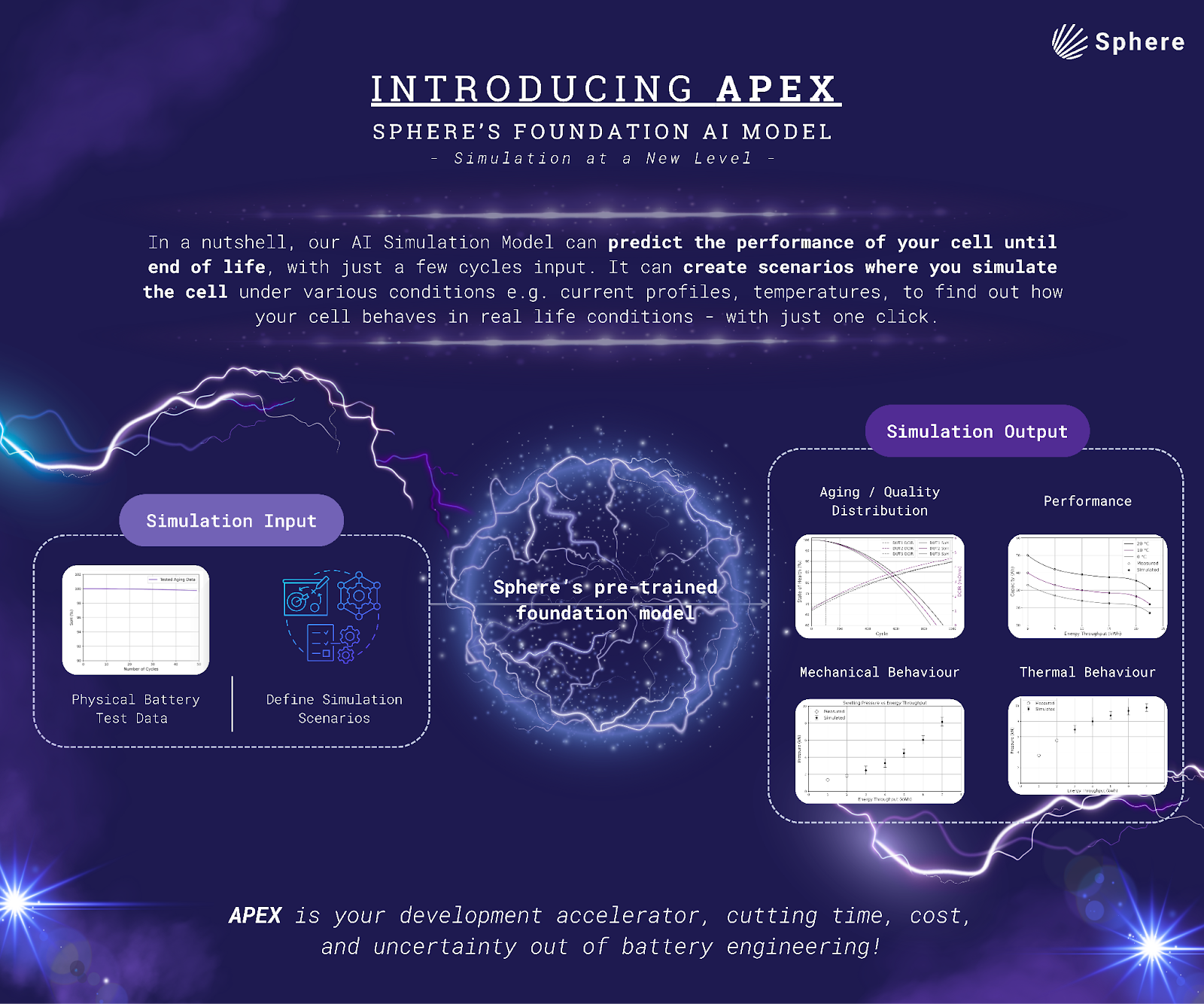Espresso Talks Episode 5 l Simulate, Validate, Accelerate: AI in Battery Testing

From months to weeks - the new pace of battery validation 🔋🚀
In Espresso Talks episode 5, AI engineers Gianmarco and Oliver reveal how a simulation-first approach is redefining battery validation — turning what once took months into a process measured in weeks.
This approach gives engineers the tools to plan and run the most relevant tests from day one — validating designs faster and with greater confidence.
Now imagine what that means in practice for battery validation: ✅ Spotting a failing design before it fails. ✅ Running fewer physical tests, but getting answers sooner. ✅ Exploring more scenarios without slowing down the process.
Espresso Talks Episode 5 l Simulate, Validate, Accelerate: AI in Battery Testing
Simulate, Validate, Accelerate: AI in Battery Testing
In the recent episode of Espresso Talks, we discussed with Gianmarco and Oliver, two of our AI Engineers at Sphere Energy, to dive into one of the most critical — and often overlooked — stages in the battery lifecycle: validation.
They brought unique perspectives on why current validation processes are slow, costly, and limiting innovation — and how a simulation-first approach can change the game.
Battery validation ensures that a cell will perform reliably under the conditions it’s designed for — whether that’s extreme temperatures, rapid charging cycles, or long-term usage in electric vehicles. But in today’s market, the traditional process can take months to years, creating a big bottleneck for getting new technologies to market.
“It’s a very important step in the process,” Gianmarco explains. “You need to make sure that whenever you drive your car, it won’t stop after a few kilometers. But right now, the process is just too long.”
A new paradigm: simulate instead of wait
The challenge is clear: traditional validation cycles are long, expensive, and resource-heavy. Every new battery chemistry or design must go through months — sometimes years — of rigorous physical testing under multiple conditions. That means countless hours in the lab, running different test scenarios, and recording data until the battery reaches its end-of-life.
This process not only slows down innovation but also makes it harder to adapt quickly when a flaw is found late in development. In fast-moving markets like electric mobility, that delay can be the difference between leading the market and falling behind.
Sphere’s answer to this challenge is APEX — an AI simulation model that uses just a small slice of early-life battery data to simulate the rest of its lifespan. By analysing the first few weeks of performance data, APEX can forecast how a cell will age under different operating conditions — from high temperatures to rapid charging cycles — without having to physically run every single test to the end.
“With APEX, we can predict how the remaining life of the battery will look after just weeks of testing,” Oliver explains. “That means fewer physical tests and faster insights.”
This means validation teams can explore more scenarios, test design changes earlier, and make confident decisions in a fraction of the time. And because APEX is grounded in real-world measurements and enhanced with physics-informed modelling, the insights remain reliable, not just fast.
Physics-informed AI: accuracy meets speed

Gianmarco explains: “We always start from real data that come from a few weeks of recording. But then we simulate the remaining cycles instead of physically testing them. The key metric we aim to predict is the battery’s end-of-life, without actually measuring it.”
By integrating both physics and data-driven insights, APEX can simulate scenarios that haven’t yet been physically tested, like for instance extreme temperatures or unusual usage patterns. This allows engineers to test multiple scenarios without spending time and money setting them up in the lab. The result is a tool that doesn’t just accelerate decision-making — it makes better decisions possible.
Transforming the role of battery validation
One of the most common questions in the industry is whether AI-based simulation will eventually replace human expertise in battery validation. For Sphere’s AI engineers, the answer is clear: absolutely not.
“Physical testing will always have its place,” Oliver emphasizes. “But AI can support decision-making by identifying failures earlier and guiding which experiments to run next.”
By using APEX to quickly analyse early performance data, teams can focus their lab time and resources on the tests that matter most.
Instead of spending months running every possible combination of tests, engineers can now:
- Spot design flaws much earlier.
- Improve new chemistries and configurations faster.
- Reduce the workload on testing facilities and equipment.
For test engineers, this shift means moving from repetitive testing to a more strategic, data-driven role — with tools that help them choose the right experiment to run today, so they can reach the right decision faster.
Looking ahead: what’s next with APEX
Sphere plans to enhance APEX by integrating more physical bounds into the model, further improving its predictive power. At the same time, the team hopes to see more players in the battery ecosystem experiment with simulation-first approaches.
Join the Conversation
Check out our video, where our AI engineer Gianmarco explains how APEX works - Sphere’s physics-informed AI simulation model, trained on high-quality real-world battery data. APEX can predict a cell’s aging and end-of-life after just a few weeks of testing. This allows teams to explore multiple operating conditions, reduce the number of costly physical tests, and accelerate battery design and validation — all without compromising accuracy.
Want to explore how APEX could transform your validation process?
👉 Get in touch at info@sphere-energy.eu - our AI engineers are happy to share more.


.png)